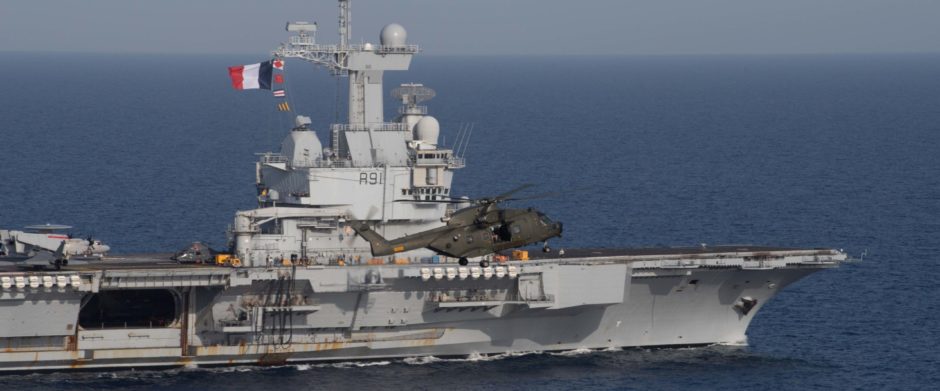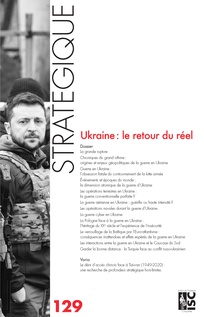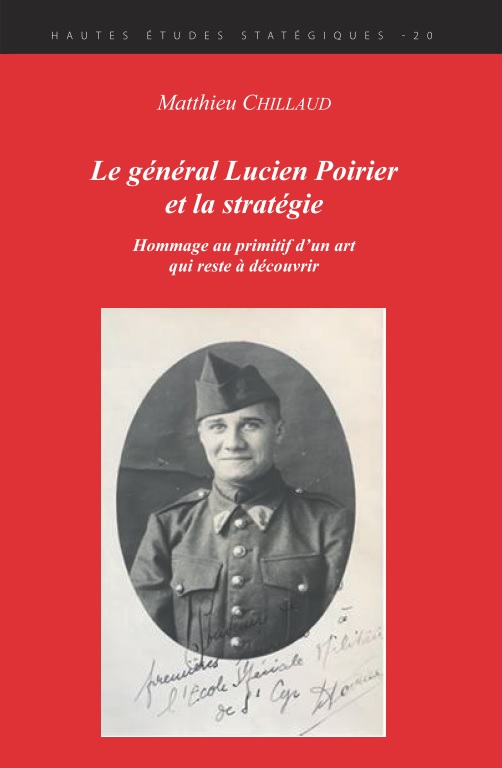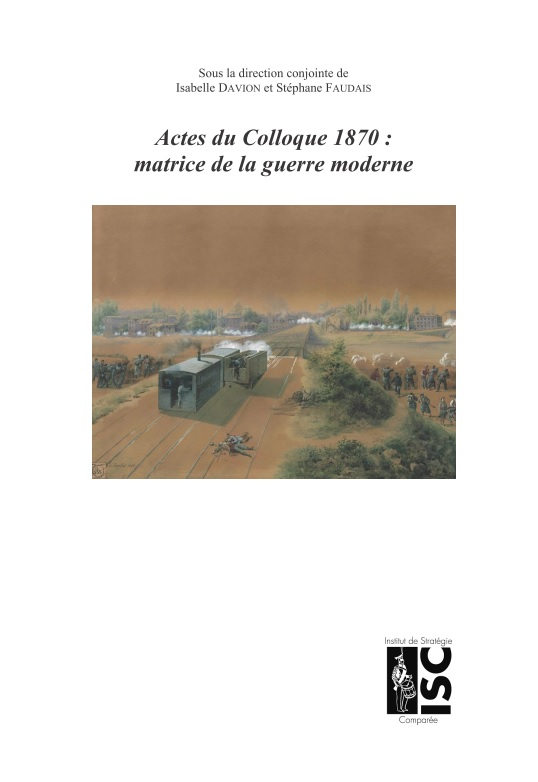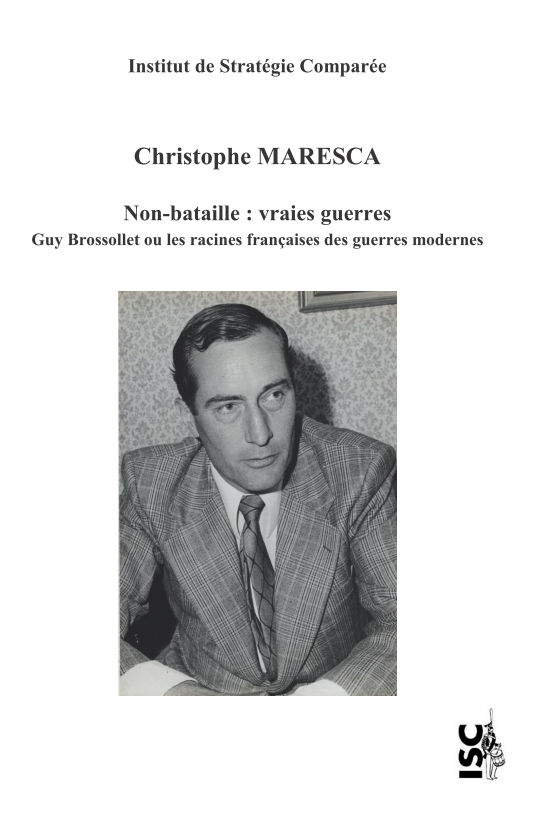The Lafayette Escadrille Memorial is located less than eight miles from downtown Paris. If one starts from the Arc de Triomphe and drives through the Bois de Boulogne, crossing the Seine River at the Suresne or St. Cloud bridges, it is but a short distance through the beautiful, lazy districts of St.Cloud and Garches to the Memorial located at Marnes-la-Coquette. After one passes the Garches train station, which forms part of the Paris-St. Nom-la-Breteche railway, there is but 400 meters to go on the Boulevard Raymond Poincare (formerly Boulevard Michel Brezin). One must keep an eye out on the left for ‘Number 5’ – the entrance to the memorial park; formerly a majestic entrance, and be alert to spot the faded Indian Head insignia – the telltale mark of the Lafayette Escadrille — on the gate’s columns, for it has blended into the lush foliage. (See figures 1 and 2).
After turning in, one must park immediately on the right, since traffic is forbidden in the park except on formal or ceremonial occasions. The few acres of land the park sits on is idyllic, the foliage dense and beautiful, which one can enjoy in the hundred-meter walk to the Memorial. One must cross the bridge that spans Marche Pond and Villeneuve Lake, and then follow the path to the right. As one rounds the corner, a sign in French relays the following :
Passant
Ici reposent cote a cote unis
dans la mort comme ils furent
dans l’action, les plus valeureux pilotes
americaines et leurs chefs francais.
Passant
Respecte leur sommeil, n’entre dans
ces lieux que pour te recueillir,
medites leur exemple et pries.
L’armee de l’air francaise
Then, as one walks past the sign and across the manicured, plush, open lawn that spans the distance to the Memorial, one is struck by the monument’s size and majesty. This Memorial, built to honor the American aviators who flew and fought for France before and after America entered the Great War, stands as a powerful testimony to the spirit and courage of the men of the Lafayette Escadrille and the Lafayette Flying Corps. The Lafayette Escadrille Memorial is surprisingly large, considering that it is so close to major thoroughfares and yet so completely hidden from all passers-by.
The Memorial is of a very characteristic 1920’s style. It sits on an incline and over looks a reflecting pool. It is composed of a triumphal arch flanked to its right and left by colonnaded gantries, which are in turn buttressed by smaller arches. The triumphal, or center arch, which is exactly one half the size of the Arc de Triomphe, dominates the construct, towering over the Memorial’s two bookend arches and gantries. 1
The dominating center arch dwarfs anyone approaching, allowing one to truly appreciate the grandeur of the monument. The sheer amount of ornate detail, and the great number of inscriptions and engravings that densely cover the monument’s facades is impressive. The triumphal arch has the following large worded inscription on the front and back,
In memory of the men
of the Escadrille Lafayette
who died in defense
or right and liberty
The “Screaming Sioux Warrior Indian Heads” are easily identifiable on each bookend arch and are the largest figures on the Memorial. Another immense Indian Head mosaic is located on the floor of the Memorial directly under the center arch.
All of the battles that the Lafayette aviators flew in are engraved on the Memorial, and run the length of the gantries on both sides and encircle the bookend arches. They read like an encyclopedic reference to World War I. Even those who know nothing of the Lafayette Escadrille and the Lafayette Flying Corps, will certainly recognize, and shudder, at the names that still haunt the world’s collective memory: Dunkerque, Soissons, Reims, St. Mihiel, Arras, Verdun, Noyons, St. Quentin, Flandres, Somme, Aisne, Marne, Vosges, Oise, Alsace, Argonne, Champagne, and Mont Didier. According to this long list of names, one would know that the men had participated in almost every major battle in the Great War after 1915, and that they had served in every sector on the Western Front. This is something only a few men could claim.
As one gazes upward from under the triumphal arch, he will see the names of the 209 men that fought and, in many cases, died for France. Some of the names, like Raoul Lufbery, are hallowed and represent America’s first aces. Some of the names represent America’s elite families, like Rockwell and Prince. Some of the names are very American: Hall, Johnson, Jones; in other cases, names like Genet and Masson are as French as these aviators’ ancestors were. And still other names, like Hoskier, Soubiran, and Pavelka, reflect the melting pot that is America.
From underneath this same central arch, as one looks to the right and left, he will see the descending steps covered by the colonnaded gantries that lead downward to the entrances of the crypt. This monument also houses a large subterranean burial vault, home to 68 sarcophagi honoring the members of the Lafayette Escadrille and the Lafayette Flying Corps. Above the descending steps the following biblical verse is engraved:
Ils n’ont pas ete separes dans la mort,
Ils etaient plus legers que les aigles,
Plus forts que les lions.
II Samuel 1.23
Descend either set of steps and one arrives at the entrances to the crypt. The plaques at the entrances read,
Aux morts de
L’Escadrille Lafayette
cette crypte est consacree
Ils allerent au trepas de leur plein gre
pour la cause qu’ils
avaient embrassee
Ils reposent dans le sol
qu’ils ont defendu.
Inside the crypt, it is rather stark and subdued, a contrast to the ornate decorations that are characteristic of the Memorial above. The coffins are placed side-by-side in groups of four, the American aviators and their French commanders lying together in death as close as they once were in life. The coffins are marked with a simple plaque. The lighting on a sunny day is beautiful and very soothing since on the opposite wall of the crypt, away from the sarcophagi, are thirteen, small, rectangular, wonderfully crafted, stained-glass windows. Each window recreates a battle scene of which the Lafayette Escadrille participated in, detailed with aircraft and signature landmarks from each particular battle region. The light from the stained-glass windows highlight in resplendent color the names of the aviators honored there. Only 49 men are actually entombed in the 68 sarcophagi, but the ones that repose there are some of the most famous: Raoul Lufbery, Douglas MacMonagle, Victor Chapman, Edmond Genet, James Rogers McConnell, Paul Pavelka, Andrew Courtney Campbell, and the French commanding officer, Georges Thenault.
If one climbs back up the steps and stands back from the Memorial on a beautiful day, one can take in the full aesthetic beauty of the monument. The Lafayette Escadrille Memorial’s size and design are breathtaking. It is definitely impressive in its grandeur, nestled majestically in this serene, peaceful park.
All is not Right
However, all is not right with the Memorial to these valiant men. The monument’s condition is a disgrace; it is falling apart. Its exterior and interior are not only both suffering from the ravages of time, but are succumbing to water damage, neglect, and pollution.
The once pristine ‘Euville’ and ‘Rocheret’ white granite surfaces that form the face of the monument have been blackened by air pollution (An apt comparison would be to consider the once blackened Notre Dame Cathedral before it was recently restored in 2000). The Memorial is unfortunately encircled and bordered by two roads — Boulevard Raymond Poincare and State Road 407; a major highway – Autoroute13; and a dual-bed railroad track that marks the Paris-St. Nom-la-Breteche line. The traffic on these heavily traveled roads has generated a thick, black grime that has obscured the majority of the white granite on the surfaces of the Memorial, even though it is surrounded by the park’s natural, lush vegetation.
A close inspection of the Memorial reveals that it is in a very poor state. The steps that lead up to the Memorial are cracked, and the masonry is crumbling. Floor tiles on the back terrace of the Memorial are broken in numerous places, leaving gaping holes that are unsightly. The Memorial’s huge blocks of granite are not only black from pollution, but also have severe cracks that run their length. Fungi and growth also nastily scar the huge blocks of granite, which have a barnacle-like appearance. This further mars the aesthetic beauty of the already damaged granite. The interior of the arches and the gantries have remained white, but the ceilings are chipped; bits and pieces have fallen from them leaving the reinforcing, rusty structural iron showing through; which has in turn discolored the surrounding surfaces.
The crypt is a disaster. There are no words to accurately describe how the damage robs the sanctity of the resting place of these heroes. The entrances to the crypt are rife with cracks. The crypt ceiling is literally a hazard to visitors. The whitewashed arches that form the interior of the crypt have huge sections that have sloughed away like a cancerous skin, revealing the bricks and unsightly mortar-work used as foundation material. Large puddles of water, even on a dry day, accumulate on the crypt floor, and the impression is that one is standing in a large subterranean sewer system or water conduit. The sarcophagi are endangered by the water damage; efforts have been made to shore up the damage and to arrest the seepage, but the attempts are slapdash and unprofessional. The rich mosaic flooring of the crypt, a priceless artwork, has been ruined by the drainage; the damage is irreversible. To add to the crypt’s woes, the alcoves that were ostensibly designed to house chapels and reflecting sanctuaries stand empty since water would damage anything placed in their recesses.
The wonderful stained-glass windows are cobwebbed and filthy. An attempt in the past was made to recolor them but the job was done unprofessionally and the panes appear worse for the effort. The original stunning beauty has been muted by the slipshod job.
On the outside of the monument, in the back, where the crypt has an exterior moat designed to catch and funnel water away, the moat is an ugly eyesore and an architectural nightmare, and it will be a major undertaking to alleviate the deleterious effect it has on the monument.
The Lafayette Escadrille Memorial’s condition is a disgrace. The park is empty year round, the number of visitors totals less than a hundred or so. 2 The Memorial has been forgotten.
The Suresne Memorial: A Brief Comparison
A little closer to Paris, but still in the same region as the Lafayette Escadrille Memorial, is the American Cemetery of Suresne, located in the Paris suburb of the same name (see figure 1). This 7.5-acre cemetery is also across the Seine from Paris, set distinctly on a dominating hill that overlooks the city. This cemetery contains the graves of 1,541 Americans who died in World War I and twenty-four unknown American war dead from World War II. Bronze tablets on the walls of the chapel record the names of the 974 missing, lost or buried at sea from both wars. This cemetery is also surrounded by roads and is exposed to the elements, lacking the dense vegetation that hides the Lafayette Escadrille Memorial. 3
Yet this cemetery is pristine. The tombstones are chalk white and look as if they were erected not long ago. The rows of graves repose in finely manicured lawns, very militaristic in their exact rows and columns. The memorial and the chapel are in similarly pristine conditions. The ravages of time and the elements are held at bay here, and only under the closest scrutiny would one know whether time has done any damage to the grounds and its contents.
The Suresne Cemetery site stands in stark contrast to the Lafayette Escadrille Memorial at Marnes-La-Coquette, and it is the most direct and telling example that something is amiss or forgotten at the Memorial for the gallant aviators of the Escadrille.
The Lafayette Escadrille Memorial Foundation
The dedication of the Lafayette Escadrille Memorial, designed by Mr. Alexandre Marcel, Chief Architect of the French Government, took place on July 4, 1928. The “Lafayette Escadrille Memorial Foundation” was established shortly thereafter in 1930 by William Nelson Cromwell, a distinguished, Paris-based, New York attorney, as “Fondateur”, and has for its mission:
- To assure the retention and permanent upkeep of the monument erected by the Lafayette Escadrille Memorial Association in the park of St. Cloud on the land granted by the French Government to the same association, for the purpose of keeping alive in the hearts of men the spirit which inspired the members of the Lafayette Escadrille and the Lafayette Flying Corps, all Americans, all volunteers for the universal cause of liberty under the flag of France before their country’s entrance into the Great War.
- To provide for suitable and appropriate religious observance in this place.
- To educate the youth of France, of America and other nations in the history of their respective countries and of each other’s country, by means of public addresses, publications, and otherwise. 4
The initial idea for a monument to the Lafayette Flying Corps was brought about by one of its former members, pilot Edgar Guerard Hamilton, who had aided in the search of his fallen Lafayette Flying Corps brethren’s bodies after the armistice. This painstaking search for bodies that were buried all over the French front, and in some cases behind former enemy lines, gave him an idea. He wanted to bring together the bodies of this unique group of men in a single, unified resting place, and to this end he enlisted the help of important American and French officials. In March of 1923 an association called the “Lafayette Escadrille Memorial Association” was founded to bring this idea to life. 5
The monument was constructed during the years 1927 and 1928. The French Government had donated the 4-hectare park, and funds for the construction were raised by public subscription in France and the United States. William Nelson Cromwell donated most of the funds for construction. After his death he left an additional trust fund of 1.5 million dollars for maintenance of the monument to the “Lafayette Escadrille Memorial Foundation” that he had founded. 6
The Memorial is still administered by the very same Foundation, which has a tax-free status, and its French counterpart, “La Fondation du Memorial de L’Escadrille Lafayette,” is a tax-free association as well. The boards of the foundations are entirely the same and are comprised of French and American trustees. The Foundation employs a gardener and a caretaker, who lives on the property for below market-value rent and manages the grounds. Routine maintenance of the park and the Memorial costs about $50,000 per year in 2002 dollars. 7
The capital in the original trust fund set up by Cromwell has steadily dwindled over the years. As reported by an American Battle Monuments Commission (ABMC) study, the major repairs to stop the infiltration of water into the crypt; the repairs already effected over the years to the structure; some disappointing investments; and the rising cost of basic maintenance, have caused the funds to completely dry up. The original construction was 3 million dollars over budget, so various economies were made at the time to cut back in expenditures; in the long run this has cost the Memorial structurally. Almost immediately after its dedication, rework had to be done from 1928 to 1936, to restore and upgrade imperfections and the beginnings of water damage. Restorations were again made in 1980 and 1986, and a few of the original design features had to be altered. 8
Without the proper funds, the Lafayette Escadrille Memorial has been allowed to slowly crumble and wear away.
The Difference at Suresne: The American Battle Monuments Commission
The American Battle Monuments Commission (ABMC) is a small, independent agency of the Executive Branch of the Federal United States (U.S.) Government. This commission is charged with the upkeep and maintenance of American cemeteries, monuments, memorials, and plaques that span the globe. The Commission fulfills its mission by:
- Designing, constructing, operating and maintaining permanent American military burial grounds in foreign countries.
- Establishing monuments within the U.S. when directed by public law, and outside the US where American armed forces have served since 1917.
- Controlling the construction and changes on foreign soil of U.S. military memorials, monuments and markers by other U.S. citizens and organizations, both public and private.
- Encouraging sponsors to properly maintain their memorials, monuments, and markers. 9
The European Region of the ABMC has its main office near Paris in Garches, just outside of Paris. It is responsible for seventeen cemeteries and fifteen memorials, monuments, and markers from Normandy to Tunisia. Included are the World War I cemeteries at Aisne-Marne, Ardennes, Oise-Aisne, the Somme, St. Mihiel, Suresne, and the Meuse-Argonne, which also have impressive monuments, and in total, house over 44,331 war dead. The number of visitors to these cemeteries exceeded 207,000 in 2000, nearly 30,000 a year per site. (Suresne had 14,662 visitors in 2002). 10
These cemeteries and the other monuments that make up the European Region of the ABMC are not problem-free however. These sites suffer from extreme exposure and corrosive problems, but as evidenced in the “Operations and Facilities Management” section of the “ABMC 2000 Annual Report,” they are aggressively addressed. The state of disrepair never approaches that of the Lafayette Escadrille Memorial. Supported by the U.S. Government, these installations on French soil are not allowed to become forgotten.
This is impressive considering the distances involved from the United States. ABMC operates and maintains twenty-four permanent U.S. military cemeteries and twenty-seven memorials, monuments, and markers in fifteen countries around the world that hosted 3,998,312 visitors in 2000 with a budget of 128,323,000 dollars. This is a considerable feat since just 369 employees worldwide handle all of this responsibility. 11
* * *
So, how can it be that the Lafayette Escadrille Memorial stands in such a state of disrepair compared to the cemetery at Suresne and the other U.S. cemeteries and monuments in France? The fundamental difference is that the memorial, though dedicated to Americans, is run privately by a Foundation that has no more funds.
An Analogy: A Forgotten Monument and the Forgotten Lafayette Escadrille
That the Memorial has been neglected is a fact. What is much more compelling and disturbing, is that the fate of the Memorial is an apt analogy of the fate of the Lafayette Escadrille and the Lafayette Flying Corps men, their history and legacy. It is true that the Lafayette Escadrille Foundation has no funds, but this is in turn due to an American public and government that have lost interest in the Lafayette aviator’s history. The memory of the Lafayette men, like the Memorial, is all but forgotten and neglected in the United States.
- Etude préalable à la restauration générale du Mémorial de l’Escadrille Lafayette, p. 6.
- Le chiffre de visiteurs cité par Secrétaire de la Fondation du Mémorial, 3 septembre 2002.
- Visite d’auteur, et l’ABMC Visitor’s Guidebook. (American Battlefields Monuments Commission ou Commission Américain des Monuments de Batailles en francais)
- Brochure de la Fondation du Mémorial de l’Escadrille Lafayette.
- Gordon, Dennis, Lafayette Escadrille Pilot Biographies (Missoula, Montana, 1991), p. 140.
- « ABMC Talking Paper » par Mme. Lillian Fluke.
- Ibid.
- Etude préalable, p. 28.
- ABMC Mission and Organization Statement, ABMC 2000 Annual Report.
- Les chiffres viennent d’ABMC 2000 Annual Report.
- Ibid.
